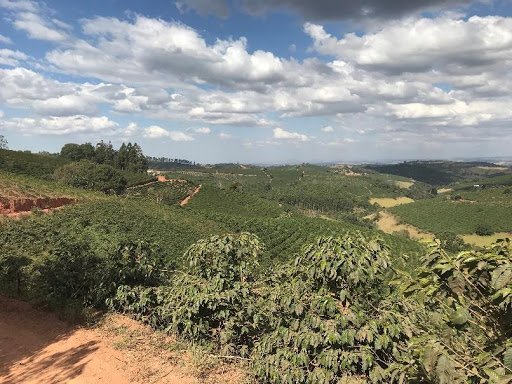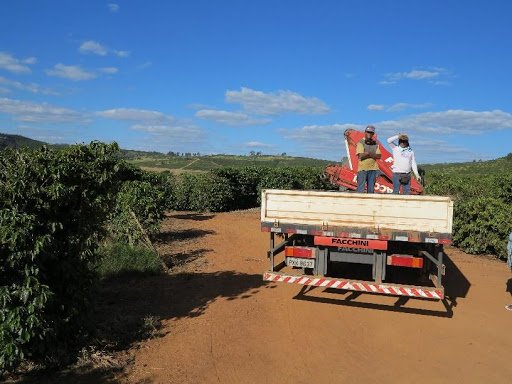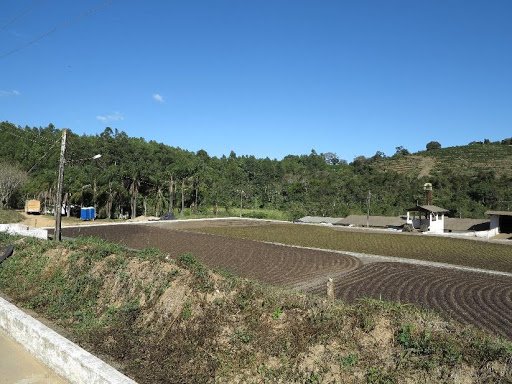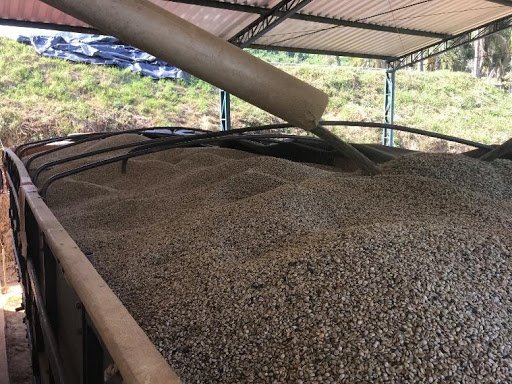Brazil
Production Perspective In Brazil
OBSERVATIONS AND THOUGHTS ON THE 2019 CROP
The Brazil harvest is very different from the rest of Latin America. It has become highly mechanized, either with tractor harvesters or with handheld machines, depending on the size and aspect of the farm. Unlike the rest of Latin America, producers harvest all the beans (dry cherry, ripe cherry and un-ripe cherry) in one pass. These beans are then separated into naturals and unripe naturals. Larger farms may also have a washing station and separate the more dense beans, depulp and wash them (semi-washed process) and sell as a higher grade. All coffees are dried on patios and then dehulled on the farms into an ungraded green bean product called “bica corrida.” This product is then delivered to the dry mill. Upon intake at the mill, the mill will grade the “bica corrida” and pass the results back to the producer within 1 – 2 days. Whilst the grading determines the price, the producer has the right to sell whenever they want.
The real work of quality and grade separation happens in the dry mill, where coffee is sorted by screen, density and color, separating out most of the physical and cupping defects. There are 4 basic grades: fine cup, good cup, grinders and Rio. There are then a range of sub-grades depending on bean size and region.
Due to mechanization, farm labor has been substantially reduced, but has also become far more skilled and better paid. Given that coffee production has grown quickly, reduced labor has not had a negative impact on rural employment.
CROP OBSERVATIONS
We were based in the town of Guaxupe and visited farms nearby, to the north in Sao Pedro de Uniao, and to the northwest in Altinopolis. Furthermore, we spoke to production and quality control managers who are buying and cupping coffees from Sul de Minas, Cerrado, and Mogiana. Whilst we found a range of opinions, some very different, we did find and see some common themes.
In the first place, the weather pattern has been unusual this year. In January there was over thirty days of very hot dry weather with no rain at all, a time when it would normally rain. Then in April/May, it was very warm and it rained very heavily. We were told total rainfall was normal, the pattern was unusual.
Secondly, the net result of the weather has been an arabica crop that has ripened very quickly and a month early. This early/fast ripening has resulted in a higher percentage of dried cherry on the tree and lower percentage of fully ripe cherry on the tree.
Thirdly, everyone agreed that the quality of the 2018 crop had been exceptional, but we heard a range of opinions regarding the quality of the crop for 2019. On one side, one QC department believed that the volume of the better fine cups for the year would be extremely limited. This same department was warning clients that it would be a difficult year. On the other side, another QC department felt that quality would be fine, although not as good as the exceptional 2018 crop. Since returning we have heard that other Brazilian shippers, especially those focused on higher qualities, are indicating that it will be a difficult year. On our very superficial visits to the field, we did see a large percentage of dried cherry and were told that this was unusual for the time of year.
CROP VOLUMES
At a senior level, we heard that the arabica crop was projected in the range of 36-38 million bags and that carry overstock from the 2018 harvest was around 10 million bags at the end of March. We were also informed that sales were strong with exports close to capacity from now until November. Those we spoke to projected Brazilian internal consumption as being lower than ‘global supply and demand calculations’ and one possible reason for the wide discrepancy between projections each year.
PRODUCER PRICES
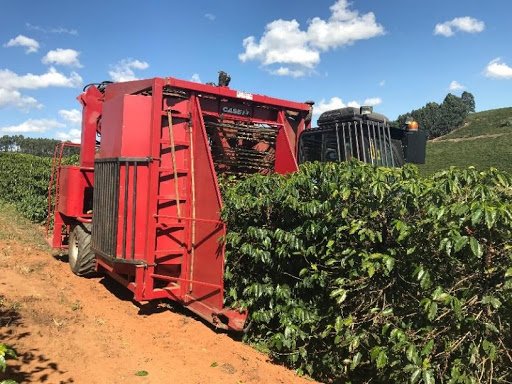
Producer prices in Brazil are measured in Brazilian reals/BRL (not dollars). Mechanized production has and continues to reduce Brazilian production costs. We tried to get an idea of those production costs but were told that they were so variable it was extremely difficult to define a number. However, it seemed to be in the range of 350 – 450 BRL per bag delivered the dry mill. At the time of our visit field prices varied between 380 – 430 BRL depending on the delivered grade.
Further to this, producers can sell their coffee at any time up to 1 – 3 years in advance, irrespective of physical delivery of the coffee. Payment is made basis the sale and physical delivery. Given this, producers have way more pricing flexibility than Central American producers who sell by harvest and delivery.
With the combination of a reasonable exchange rate, much lower production costs and pricing flexibility, we got the impression that most producers are at or slightly above costs. In the words of one senior director, “the impact of global trade and currency values is equally important to NYC when determining the producer price in Brazil.”
We did ask a couple of the producers if they intended to further expand or reduce production. Both said they intended to keep production are current levels.
SUSTAINABILITY
We found that sustainability appeared to be driven by the market for certified production. We were told that Brazilian laws were actually stricter than the certification programs and compliance with Brazilian laws resulted in a passing grade for sustainable certification programs. Certification programs included 4 C’Utz, Café Practices, and RFA. These programs total about 20% of the production of the exporters that we met.
We also discussed environmental sustainability and climate change and everyone we spoke to felt that change was happening. There were two critical areas: warmer weather patterns and less water availability. Regarding forested areas, everyone pointed out to us that under Brazilian law, 20% of the farmed land must be forested. From this perspective, Brazilian producers believed they had tighter regulations than other coffee-producing countries.
KEY TAKEAWAYS
- Despite the “global coffee crisis,” Brazil is selling at, or above, the cost of production.
- The crop came to maturity around 1 month early due to unusual weather patterns (rain) in January and in April/May. As a result, some shippers are concerned that quality will be poor and there will be a lower volume of fine cups and specialty coffees.

